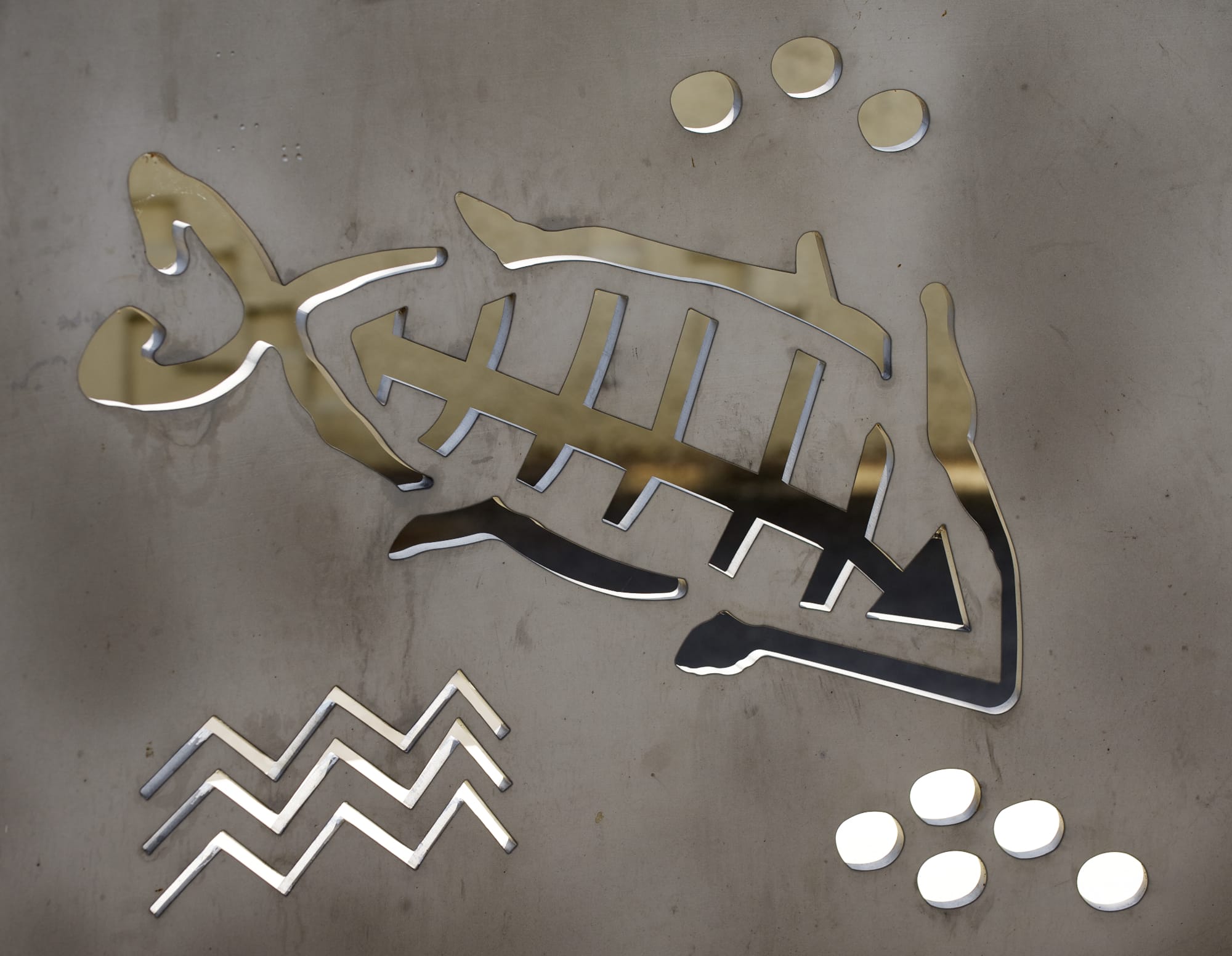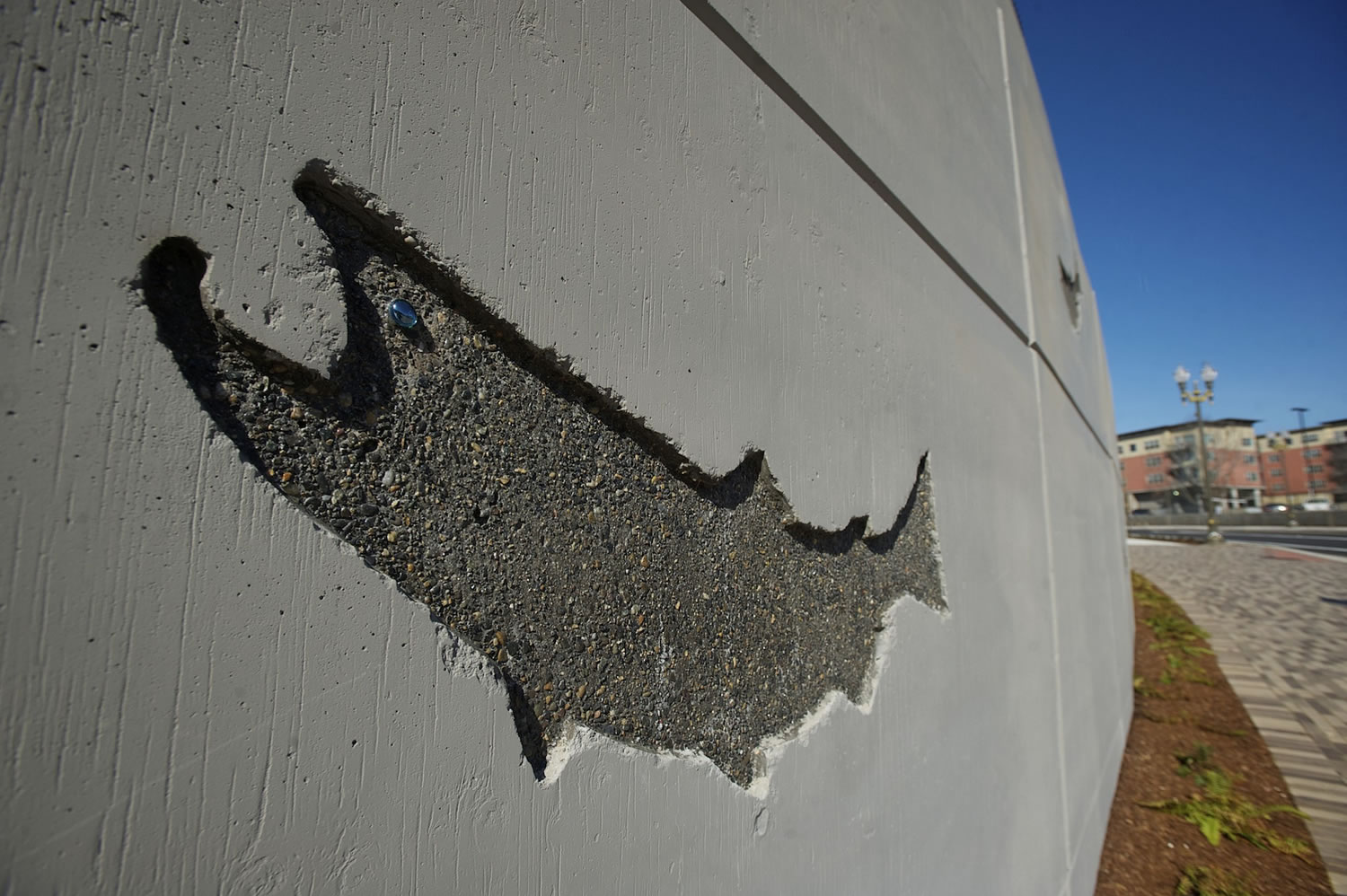An iconic fish that has sustained Northwest families for thousands of years has become a popular source of artistic inspiration.
Images of salmon highlight the two most prominent art installations built in Vancouver’s historic core in the last dozen years.
“Salmon is a spiritual resource for us,” said Lillian Pitt, whose tribally inspired artwork is part of the Land Bridge at Fort Vancouver.
Jim Demetro doesn’t share Pitt’s lineage, but he appreciates the salmon’s role in Northwest tribal heritage.
“Their culture revolved around salmon. To portray that, to tell that narrative, is extremely important,” the Battle Ground sculptor said. His bronze chinook are part of the Salmon Run Bell Tower in Esther Short Park.
But the arching, muscular shape of the salmon also graces more humble municipal fixtures: they’re on city manhole covers and pressed into a concrete wall along a downtown street.
It all adds to the sense of place for people who live along the Columbia River. It’s something that was bred into Pitt, whose family represents Yakama, Warm Springs and Wasco tribes.
“I’m Native American, and we have been fishing for salmon for thousands of years,” Pitt said.
“We had salmon feasts: giving thanks to salmon, for giving its life to keep us sustained. And, it was our economic resource. People came from all over to trade for our salmon,” Pitt said.
She remembers watching men catch salmon at Celilo Falls, a major Columbia River fishing site before it was inundated in 1957 by construction of The Dalles Dam.
“I was 12 when The Dalles Dam drowned Celilo Falls,” Pitt said.
Fishermen used hand-cranked cable cars to reach dip-net sites on small islands and rocks in the river. They used those cable cars to transport their catch back to shore … and to give some curious kids a ride.
“I remember going across on a pulley car over the falls,” Pitt said. “Our parents didn’t know. The car smelled very strongly of salmon: all stages, fresh to nonfresh.”
Her salmon image on the Land Bridge is part of a stainless steel “basket” sculpture at one of the span’s lookout points. It was inspired by an image in the Columbia Gorge — an uncommon image, as it turns out.
“The artwork in the petroglyphs over thousands of years don’t always display the salmon; there are very few salmon images,” Pitt said. “We don’t know why; there’s no one to explain that.”
Demetro created four salmon in and around the bell tower at Propstra Square, at the southeast corner of Esther Short Park.
His sculptures represent “the struggle to get upstream,” Demetro said. His bronzes were based on actual salmon. Demetro said he looked at trophies from “a lot of different fishermen friends.”
Another Propstra Square salmon, created by artist Ken MacKintosh, is on the top of the bell tower.
Other salmon sculptures are visible in less-elevated settings. New versions of city manhole covers feature a pair of salmon, circling local landmarks such as Mount St. Helens and the bell tower.
“They’re more community oriented,” said Dan Swensen, Vancouver Public Works’ construction manager.
A series of 10 salmon is stamped into a concrete wall that was part of a rail overpass project at Grant and West Sixth streets.
“We wanted to provide something that was not a blank wall,” Swensen said.
As he looked for more attractive options, Swensen said, he thought about the Propstra Square bell tower just a couple of blocks away.
“We tried to mimic that as much as we could: salmon making a run to the river,” Swensen said.
For $23.99 plus tax, the city got the rights to a graphic that could be scaled up big enough to match the bell tower salmon design. It seemed appropriate, since the road work was part of the Columbia River waterfront access project.
And the construction company didn’t charge anything to stamp the image into the concrete wall.
So what does Pitt, whose work represents untold generations of family tradition, think of all these salmon in steel and bronze and concrete?
“I celebrate it. Salmon belongs to everybody,” Pitt said. “It makes me happy to see salmon, however it’s represented.
“No one will know the spiritual relevance,” Pitt said. “But for those of us who do, that’s OK.”





